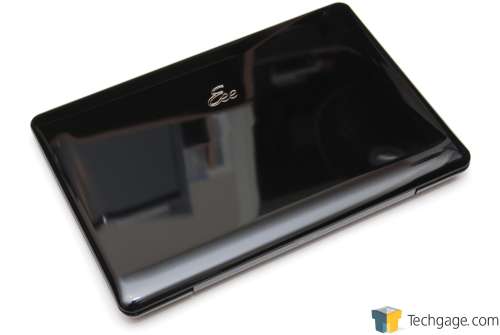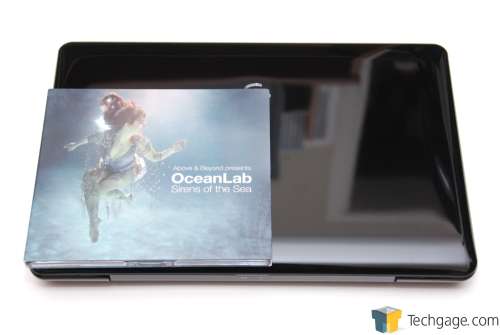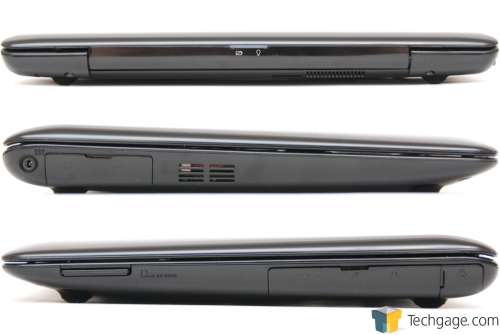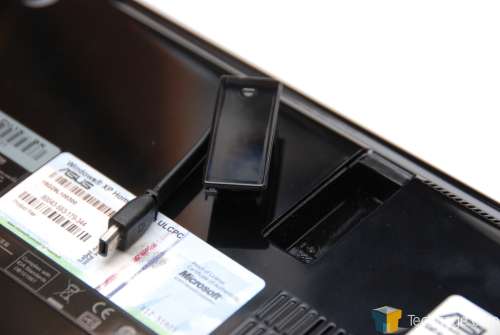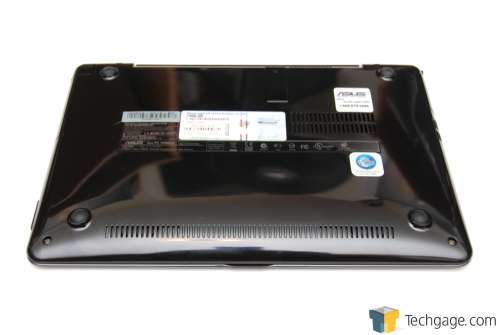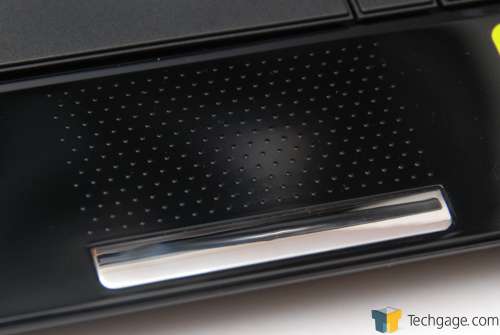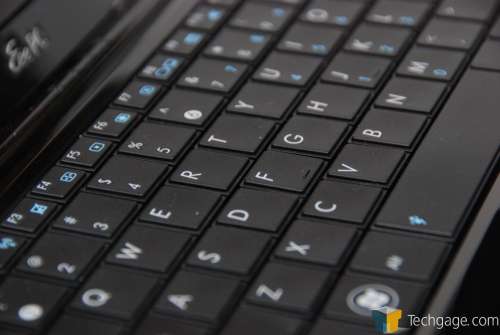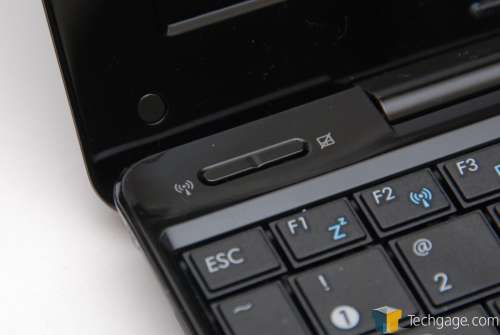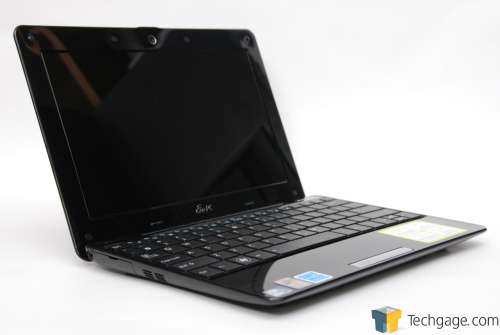- Qualcomm Launches Snapdragon 4 Gen 2 Mobile Platform
- AMD Launches Ryzen PRO 7000 Series Mobile & Desktop Platform
- Intel Launches Sleek Single-Slot Arc Pro A60 Workstation Graphics Card
- NVIDIA Announces Latest Ada Lovelace Additions: GeForce RTX 4060 Ti & RTX 4060
- Maxon Redshift With AMD Radeon GPU Rendering Support Now Available
ASUS Eee PC 1008HA Seashell Netbook
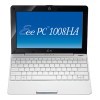
With an incredible number of netbooks available on the market, how does one compete? With ASUS and their 1008HA (Seashell), the simple answer is to make not a faster notebook, but a feature-rich netbook with a better design. The 1008HA delivers on both counts, with the best netbook design we’ve seen to date and other bonuses on the software front.
Page 1 – Introduction
By now, you’re probably all well-aware of what a netbook is, and what a netbook isn’t. In fact, the proper question to ask might be, “Who doesn’t know what a netbook is?”, because the number of responses would be far fewer. In fact, it’s rather rare when a new piece of technology launches and even the most non-techy people know what it is within a two year span. Indeed, the reach of netbooks has blown away all expectations.
We’re now half-way through 2009, and the netbook idea isn’t so fresh anymore. But despite that, they’re still selling like hotcakes, to new adopters and upgraders alike. The good news is that these devices continue to improve (just look at the launch units and then what we have today… it’s like night and day), and competition is absolutely fierce. It’s extremely impressive that for a mere $400, you can pick up a fully-functional netbook that can be tossed pretty-well anywhere.
When ASUS first launched their Eee PC in late 2007, there was no competition, thanks to the fact that they were the originators. But it didn’t take too long before the market become saturated, and before we knew it, even companies we’ve never heard of were jumping on the bandwagon and releasing their own netbooks. That makes it tough to find one truly unique, not to mention find one that’s simply better than another for a given price-range.
Closer Look at ASUS’ Eee PC 1008HA
With such competition, companies are required to continually innovate, and although ASUS doesn’t currently own the top spot for netbook sales (that belongs to Acer thanks to their incredible reach and market presence), they’ve been releasing new models for what seems like every other week, and making some fine improvements on each successor. With the 1008HA, though, the didn’t simply tack on a few new features, but rather wanted to change the actual look, despite the lack of room they’re given.
That’s how the “Seashell” name was born. Although the physical dimensions are on par with other Eee PC 1000-series models, both the lid and underbelly are curved to mimic a seashell shape. I admit, the first time I saw this design, I wasn’t at all a fan. But I’m not sure what side of the bed I woke up on that morning, because now that I’ve spent some good time with it, I’d have to say it easily goes down as the best-looking netbook out there.
We’ll tackle the intricacies such as included hardware on the following page, but here we’ll take a tour around the latest model and see all of what it offers. First, you can see its glossy cover, and incredibly clean design:
We received the black version (as you can see), but for those looking for a more flavorful netbook, the 1008HA also comes in White, Pink, Blue, Sapphire Blue and Ruby Red (to match ladies lipstick, perhaps?). And for those who might not yet understand just how small a netbook is, here’s a size comparison with a standard audio CD case. The 1008HA is close to being two full CDs side-by-side and 1 1/3 of a CD tall. If you stack two standard CDs on top of each other, their height will be taller than the thickest point of the Eee PC.
With the “Seashell” design, ASUS wanted to take the opportunity to create the cleanest-looking netbook possible, and well, they’ve done it in my opinion. With nothing plugged into the device, there’s absolutely no available connector slots/ports visible, except for the memory card reader (and perhaps the AC/DC power port). Instead, each set of connectors is protected by a small door that opens and closes with ease
The first view in the above image is the back of the unit. The center LED lights up depending on the netbooks standby mode or charging state, and aside from that, there’s no other connectivity options here. The center image is the left-side view, and that small door next to the power offers a mini-USB port and also a regular USB port. On the right-side, we have the memory card reader, another USB port, audio jacks and also the LAN port. To help keep in line with the clean aesthetics, the LAN port at first glance doesn’t actually look large enough to use, but the bottom part of this opening lowers just a tad in order to open up the needed space. This doesn’t at all affect the sitting position.
I mentioned the Eee PC includes a mini-USB port, but what on earth could that be for? Well, the below photo will tell you. Again, in order to help continue the clean design of the unit, ASUS opted to include VGA support with the help of a removable dongle which stores into the back of the unit. To use VGA, you simply take this out and plug it into the mini-USB port. I’m guessing the majority of people will never use the VGA ability to begin with, so keeping it out of sight will be appreciated.
There are a total of four air vents on the 1008HA, three of which are found on the bottom (and one on the left side). Here you can also get a better view of the included VGA dongle, and also the placement of the feet, which keep the netbook raised just enough to offer a comfortable experience when sitting with it at a table or desk.
When Apple first launched their iPhone, people raved over the multi-touch functionality. That is, to be able to use more than one finger at a time on the screen or touchpad, which would allow you to use two fingers to zoom in or out on a photo (there are more uses, but that’s the most common). ASUS included the same feature here, and as a result, the touchpad is quite a bit different than most. Rather than a typical pad design, there are many small bumps which offers a very unique feel.
For short doses, I didn’t mind using this pad too much, but after long use, the tip of my finger would begin to tingle, and it wasn’t totally comfortable. This may vary from user to user, but I would have preferred a standard touchpad in lieu of one that supports multi-touch. That’s just me, and again, opinions may and will vary.
ASUS used every available millimeter of the Eee PC’s width to store a large keyboard, and it’s almost full size, and though I’m not positive of the exact % difference, I’d have to imagine the keys here are at least 90% of a regular keyboard. Yes that’s right… you can actually use a netbook and not typo on every other word. It’s still not as comfortable as a 12″+ notebook’s keyboard for me, but I’ve never been one to enjoy using smaller-than-desktop-size notebook keys.
Finally, both the top-left and top-right corners of the keyboard feature buttons. On the left side, you can find the WiFi and Touchpad enable/disable, while on the right-side you simply have the power button.
Now this is a handsome-looking netbook:
On the following page, we’ll take a deep look at the tech specs, included software (also the robust backup software unique to the Eee PC) and more.
Support our efforts! With ad revenue at an all-time low for written websites, we're relying more than ever on reader support to help us continue putting so much effort into this type of content. You can support us by becoming a Patron, or by using our Amazon shopping affiliate links listed through our articles. Thanks for your support!




